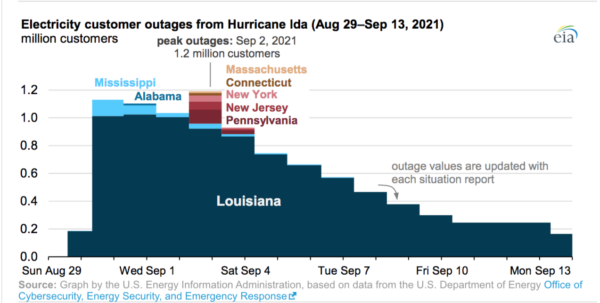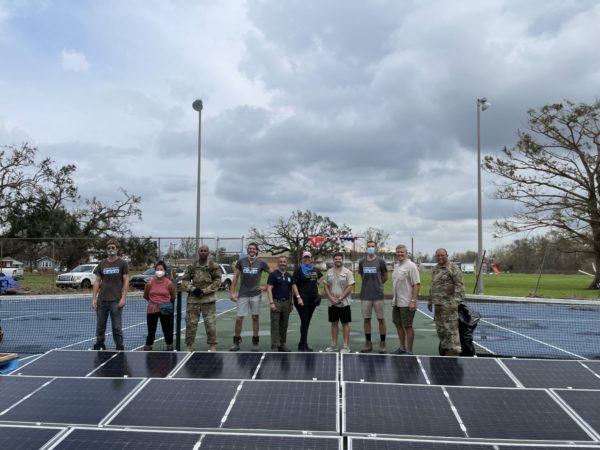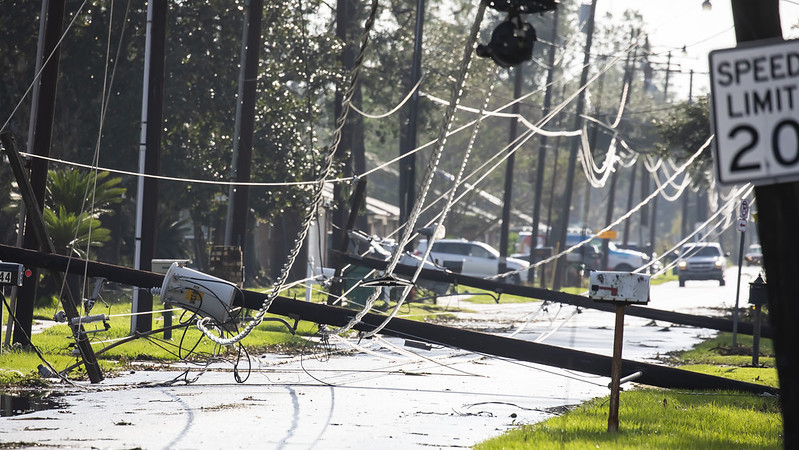Hurricane Ida knocked out power for up to 1.2 million electricity customers across eight states, according to reports from the U.S. Department of Energy’s Office of Cybersecurity, Energy Security, and Emergency Response (CESER).
The hurricane initially caused more than one million customer outages in Louisiana, Mississippi, and Alabama after it made landfall as a Category 4 storm on August 29. As the storm continued toward the Northeast, it caused outages in several northeastern states on September 1.

CESER’s situation reports showed that at least 232,000 customers lost electricity service in five northeastern states (Pennsylvania, New Jersey, New York, Connecticut, and Massachusetts). Most of those customers had power restored within 24 hours.
Service to customers in Mississippi was almost entirely restored by Tuesday, September 7. At that point, about half a million customers in Louisiana were still without power. As of the morning of September 13, CESER estimated that power had been restored to 85% of Louisiana customers.
Entergy, the investor-owned utility that serves customers in multiple states including Louisiana and Mississippi, estimated that Hurricane Ida damaged 30,000 utility poles. That was nearly as many as the combined effects of Hurricane Katrina in 2005 (17,000 poles) and Hurricane Laura in 2020. By the utility’s estimates, power may not be restored to certain southeastern Louisiana parishes until near the end of September.

Image: PosiGen
Efforts have been under way in Louisiana to deploy emergency solar resources. For example, PosiGen Solar said it teamed up with the Footprint Project to deploy 12 solar power stations at disaster supply sites in Hurricane Ida-damaged areas in Louisiana. A dozen firehouses, churches, and community centers damaged or destroyed and left without power because of the storm have lights, fans, refrigerators, and cell phone charging stations powered by solar energy.
The Footprint Project has worked to bring clean energy to areas of climate disasters and humanitarian emergencies since 2017. Volunteers in southeast Louisiana said this is their largest response operation to date.
And Schneider Electric said it worked with Footprint to set up a solar powered phone-charging station and two “Solar Packs” with continuous charging at full irradiation at United Houma Nation HQ in Houma, Louisiana. Schneider also delivered two solar trailers for Operation Blessings equipped with solar panels that fold out for charging with one to power flood lights.
This content is protected by copyright and may not be reused. If you want to cooperate with us and would like to reuse some of our content, please contact: editors@pv-magazine.com.









By submitting this form you agree to pv magazine using your data for the purposes of publishing your comment.
Your personal data will only be disclosed or otherwise transmitted to third parties for the purposes of spam filtering or if this is necessary for technical maintenance of the website. Any other transfer to third parties will not take place unless this is justified on the basis of applicable data protection regulations or if pv magazine is legally obliged to do so.
You may revoke this consent at any time with effect for the future, in which case your personal data will be deleted immediately. Otherwise, your data will be deleted if pv magazine has processed your request or the purpose of data storage is fulfilled.
Further information on data privacy can be found in our Data Protection Policy.